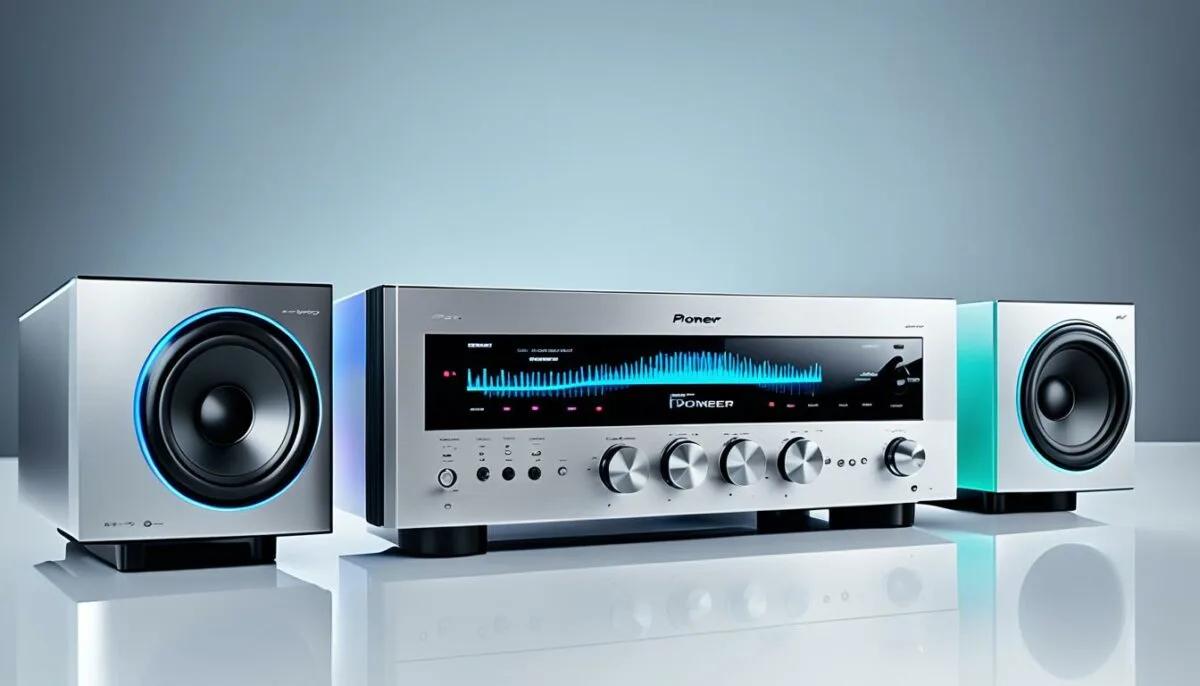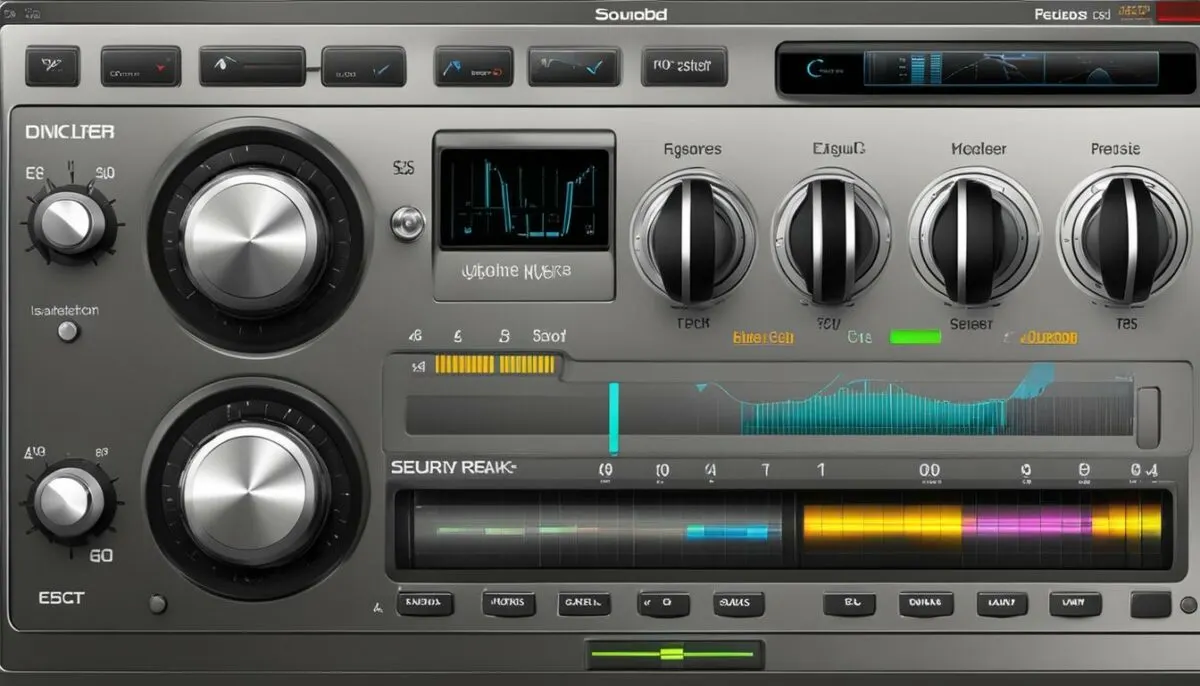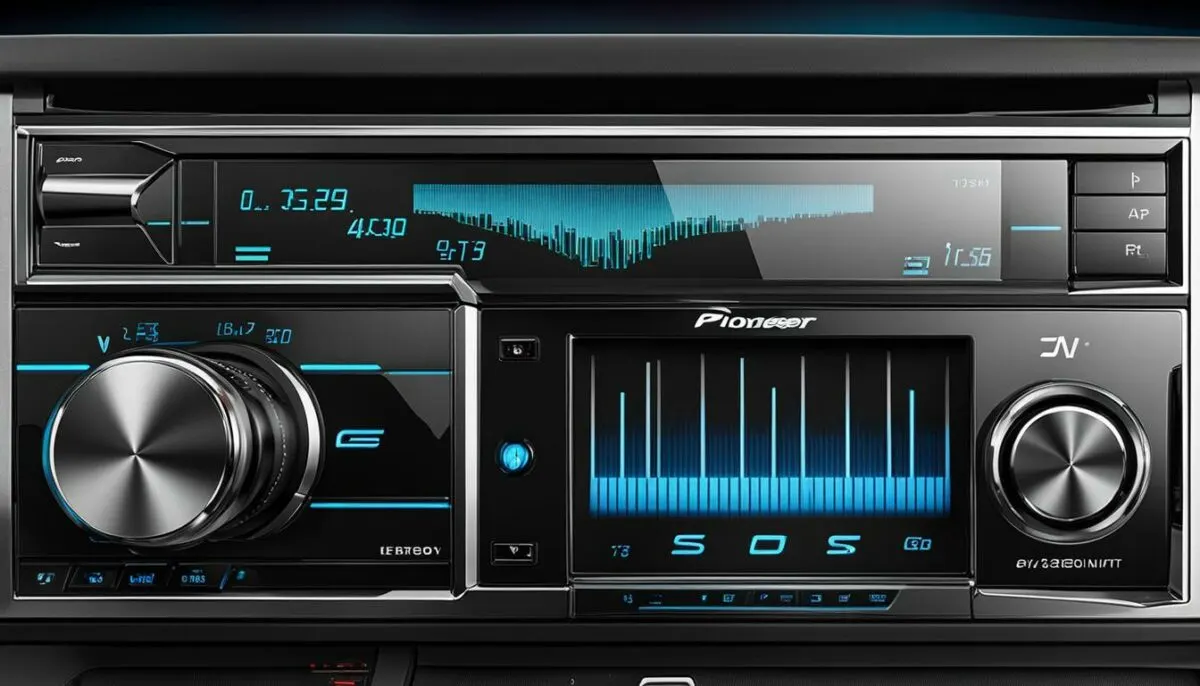Are you looking to optimize the audio performance of your Pioneer car stereo? Look no further! In this comprehensive guide, we will provide you with all the information you need to fine-tune your car stereo’s equalizer settings and achieve the best sound quality possible.
With the right equalizer settings, you can customize the frequency response of your car stereo and eliminate distortions, improve clarity, and create a well-balanced audio environment in your vehicle. But where do you start?
In this guide, we’ll cover everything you need to know about optimizing your Pioneer car stereo equalizer settings. We’ll start by explaining what the equalizer is and how it works, followed by steps for optimizing your car stereo’s sound, adjusting the EQ presets, fine-tuning frequency bands, and understanding the impact of bass and treble. We’ll also explore how to customize the EQ settings for different music genres, use sound imaging features for enhanced audio quality, and troubleshoot common audio issues.
So, if you’re ready to get the best possible sound from your Pioneer car stereo, let’s dive in!
Key Takeaways
- The equalizer on your Pioneer car stereo allows you to adjust the frequency response of your audio system to achieve the desired sound quality
- Audio tuning plays a critical role in achieving the best sound from your Pioneer car stereo
- Optimizing your Pioneer car stereo sound involves adjusting the EQ presets, fine-tuning the frequency bands, and understanding the impact of bass and treble
- Customizing the equalizer settings for different music genres and using sound imaging features can enhance your in-vehicle audio experience
- Proper maintenance of your Pioneer car stereo is crucial to ensure long-term audio quality
Understanding the Equalizer on Your Pioneer Car Stereo
When it comes to achieving the best sound quality from your Pioneer car stereo, understanding the equalizer is key. The equalizer allows you to control the frequency response of your car audio system, providing you with the ability to enhance or tone down specific frequency ranges.
The Pioneer car stereo equalizer consists of several bands that you can adjust to achieve your desired sound quality. The number of bands available varies depending on the model, but most Pioneer car stereos have at least 7-13 bands.
Each band represents a specific range of frequencies, starting from the lowest to the highest. By adjusting the level of each band, you can fine-tune the sound to your liking. For example, if you want to emphasize the bass in your music, you can increase the level of the lower frequency bands. On the other hand, if you want to tone down the treble, you can reduce the level of the higher frequency bands.
It’s important to note that adjusting the equalizer can have a significant impact on the overall sound quality of your Pioneer car stereo. However, it’s essential to use it judiciously and not overdo it, as excessive adjustments can cause distortion and negatively affect the listening experience.
Adjusting the Equalizer on Your Pioneer Car Stereo
The process of adjusting the equalizer on your Pioneer car stereo involves a few steps. Here’s how to do it:
- Start by playing some music through your Pioneer car stereo.
- Navigate to the equalizer settings on your stereo. This is usually found under the audio or sound settings menu.
- Experiment with the different equalizer presets available on your Pioneer car stereo. Most Pioneer car stereos come with several presets, such as rock, pop, jazz, or classical. Choose the one that best matches the music genre you’re listening to at the moment.
- If you want to fine-tune the equalizer settings further, you can manually adjust the individual bands. Start by adjusting one band at a time and listen to the impact it has on the sound. Once you’re satisfied with the adjustment, move on to the next band.
- Continue making adjustments until you achieve the desired sound quality. Remember to use the equalizer sparingly and avoid excessive adjustments that can negatively impact the sound quality.

Pro Tip: To save time and effort, consider creating custom equalizer settings for your favorite music genres. Once you’ve fine-tuned the settings for one music genre, save them as a preset so that you can use them again later.
Now that you understand the equalizer on your Pioneer car stereo and how to adjust it, you’re ready to fine-tune your car audio system to achieve the best sound quality possible. Remember to experiment with different settings and to use the equalizer judiciously to avoid distortion and negative impacts on the listening experience.
The Importance of Audio Tuning for Pioneer Stereos
When it comes to getting the best sound from your Pioneer car stereo, audio tuning is a crucial step. Properly tuning your audio settings can eliminate distortions, improve clarity, and create a well-balanced audio environment in your vehicle.
Audio tuning involves adjusting various settings on your Pioneer car stereo, such as the equalizer, time alignment, and crossover settings. By fine-tuning these settings, you can optimize the sound quality to better suit your personal preferences and the type of music you listen to.
Keep in mind that the audio tuning process can be complex and time-consuming, requiring patience and attention to detail. For this reason, it’s often recommended to seek the assistance of a professional audio tuner to ensure the best possible outcome.
The Benefits of Professional Audio Tuning
While it’s possible to do audio tuning yourself, seeking the help of a professional audio tuner can provide a range of benefits.
- Experience and expertise: A professional audio tuner has the knowledge and experience to fine-tune your Pioneer car stereo’s audio settings to achieve the best possible sound quality.
- Specialized tools and equipment: Professional audio tuners often have access to specialized tools and equipment that can accurately measure and adjust your car stereo’s audio performance.
- Time-saving: Audio tuning can be a complex and time-consuming process, but a professional audio tuner can complete the task much faster, saving you time and effort.
- Customization: A professional audio tuner can customize your Pioneer car stereo’s audio settings to your specific preferences, ensuring that you get the sound quality you desire.
Tips for Effective Audio Tuning
If you opt to do audio tuning yourself, here are some tips that can help you achieve the best sound quality from your Pioneer car stereo:
- Start with a flat EQ: Before making any adjustments to your equalizer settings, start with a flat EQ, also known as a “zero” EQ. This will provide a neutral audio output that you can then fine-tune according to your preferences.
- Test different audio sources: When tuning your Pioneer car stereo’s audio settings, test different audio sources, such as CDs, MP3s, and radio broadcasts. This can help you identify any audio issues and fine-tune the settings accordingly.
- Adjust one setting at a time: To avoid overwhelming yourself and potentially causing more harm than good, adjust one setting at a time. This will allow you to hear any changes and determine whether they improve or detract from the overall audio quality.
- Use test tones: Test tones can help you determine the optimal frequency settings for your Pioneer car stereo’s equalizer. These tones produce a single frequency that you can adjust using your equalizer to achieve the desired sound quality.
- Take note of your adjustments: Keep track of the adjustments you make to your Pioneer car stereo’s audio settings, so you can easily revert to previous settings if needed.
By following these audio tuning tips, you can optimize the sound quality of your Pioneer car stereo and enjoy a superior in-vehicle audio experience.

Steps to Optimize Your Pioneer Car Stereo Sound
Here are some tips to help you make the most of your Pioneer car stereo’s audio performance and optimize the equalizer settings:
- Start with a Flat EQ: Before adjusting any of the equalizer settings, make sure to reset the EQ to a flat frequency response. This will provide a baseline for fine-tuning the audio settings.
- Adjust the Volume: Set the volume to a comfortable level when tuning the audio settings. Avoid turning up the volume too high, as this can lead to audio distortion and damage to your hearing.
- Use High-Quality Audio Files: Use high-quality audio files when testing the audio settings. Low-quality audio files may contain distortions and artifacts that will affect the perception of sound quality.
- Test Different Music Genres: Listen to different music genres to get a sense of how the equalizer settings affect audio performance. Some genres may require more bass or treble, while others may require less.
- Adjust the EQ Presets: Experiment with the pre-set EQ presets on your Pioneer car stereo and see which one works best for your preferences. You can also customize the settings to create your own EQ preset.
- Fine-Tune the Frequency Bands: Adjust each frequency band on the equalizer to achieve the desired sound quality. For example, if you prefer more bass, increase the lower frequency bands, while if you prefer more treble, increase the higher frequency bands.
- Balance the Bass and Treble: Find the optimal balance between bass and treble to create a well-balanced audio environment in your vehicle. Avoid setting the bass or treble too high, as this can lead to distortion and affect overall audio quality.
- Use Sound Imaging Features: Experiment with additional sound imaging features such as time alignment and stage width adjustment to enhance the audio quality of your Pioneer car stereo. These features can help create a more immersive listening experience.
By following these tips, you can optimize the audio performance of your Pioneer car stereo and make the most of the equalizer settings. Remember to fine-tune the settings based on your preferences and experiment with different audio adjustments to find the best sound quality for your vehicle.

Setting the EQ Presets on Your Pioneer Car Stereo.
When it comes to optimizing your car stereo’s audio quality, selecting the optimal EQ preset is an essential first step. Pioneer car stereos offer a range of pre-set equalizer presets, each of which is designed to enhance specific types of music. To select the optimal preset, consider the genre of music you listen to most frequently and adjust the EQ settings accordingly.
If you prefer a more customized audio experience, you can also modify the EQ settings yourself. By adjusting the frequency bands, you can fine-tune the audio to your personal preferences. Begin by setting all frequency bands to their default position and adjusting each band one at a time. We recommend starting with the midrange frequencies and adjusting them until the vocals and instruments are clear and well-defined.
| Frequency Band | Optimal Settings |
|---|---|
| Bass (Low Frequencies) | Increased for genres like hip-hop or EDM, decreased for genres like classical or jazz |
| Midrange Frequencies | Increased for clearer vocals and instruments |
| Treble (High Frequencies) | Increased for genres like rock or metal, decreased for genres like jazz or classical |
Remember, the optimal EQ settings will vary depending on your personal preferences and the acoustics of your vehicle. Don’t be afraid to experiment with different settings until you find the one that sounds best to you.

“By adjusting the frequency bands, you can fine-tune the audio to your personal preferences.”
Adjusting the Frequency Bands on Your Pioneer Car Stereo
One of the most significant factors affecting the sound quality of your Pioneer car stereo is adjusting the frequency bands. By tweaking the frequency bands, you can enhance or attenuate specific frequencies to achieve the desired sound quality.
Keep in mind that each Pioneer car stereo model may have a different number of frequency bands available. Some stereos offer only a few bands, while others provide a more extensive selection.
To optimize the sound quality of your Pioneer car stereo, you need to adjust the frequency bands according to your preferences. Here’s how you can do it:
Step 1: Identify the Frequency Bands
Before adjusting the frequency bands, you need to identify them. Depending on your Pioneer car stereo model, the frequency bands may be labeled differently. Check the user manual or the stereo’s display panel to locate the different frequency bands.
Step 2: Understand the Frequency Range
Each frequency band corresponds to a specific range of frequencies. For example, the bass frequencies are usually in the 20 Hz to 250 Hz range, while the treble frequencies are in the 4 kHz to 20 kHz range. Understanding the frequency range will help you adjust the bands more precisely.
Step 3: Adjust the Bands
Once you’ve identified the frequency bands and their range, you can begin adjusting them. To start, set all the frequency bands to the neutral position or the center value. Then, play your favorite music and adjust the bands one at a time.
The best approach is to adjust the bands starting from the lowest frequency and working up to the highest frequency. Consider what kind of music you’ll be listening to and adjust the bands accordingly. For example, if you prefer bass-heavy music, you might want to enhance the lower frequency bands.
Step 4: Test and Fine-Tune
After adjusting the frequency bands, play some music and test the sound quality. If you’re not satisfied with the results, fine-tune the bands until you achieve the desired sound quality. Keep in mind that adjusting the frequency bands too much can negatively impact the overall sound quality, so be cautious with adjustments.
Once you’ve optimized your frequency bands to your liking, save the settings as a custom EQ preset so that you can easily switch back to them later.

Conclusion
Adjusting the frequency bands on your Pioneer car stereo is a critical step in optimizing the sound quality. By following these steps, you can fine-tune the bands according to your preferences and enjoy a better audio experience. Remember to save your custom EQ preset, so you can easily switch back to your preferred settings.
Understanding the Impact of Bass and Treble on Your Car Stereo.
When it comes to achieving optimal audio performance, tuning the bass and treble settings on your Pioneer car stereo is essential. These settings control the low and high frequencies of the audio output, respectively, and have a significant impact on the overall sound quality.
Optimizing bass and treble settings is an integral part of Pioneer stereo audio tuning.
The bass controls the low frequencies of the audio output, and adjusting it can create a more powerful and impactful sound. However, too much bass can cause distortion and muddiness in the audio, so it’s crucial to find the right balance.
The treble, on the other hand, controls the high frequencies and can help add clarity and brightness to the sound. Too much treble, however, can result in a shrill or harsh sound.
It’s recommended to first set the bass and treble to their default, neutral positions before making any adjustments. From there, you can experiment with different levels to find the optimal balance for your preferences.
Optimizing bass and treble settings is a critical step in getting the best sound from your Pioneer car stereo.

Customizing the Equalizer Settings for Different Music Genres
Music lovers know that different genres have different sound characteristics. For example, rock music tends to have more emphasis on the mid-range frequencies, while hip-hop music generally has a deep bass and strong treble. Therefore, when listening to different genres, it’s essential to adjust the equalizer settings on your Pioneer car stereo to achieve an optimal sound quality.
To customize the equalizer settings on your Pioneer car stereo for specific music genres, follow these steps:
- Start by selecting the appropriate EQ preset for the genre you’re listening to. Pioneer car stereos often come with pre-set equalizer presets for various genres, such as rock, pop, jazz, and classical. You can access these presets by pressing the “EQ” button on your stereo’s control panel.
- If you find that the preset doesn’t quite suit your preferences, you can adjust the individual frequency bands. For example, if you find that the bass is too weak in the rock preset, you can increase the low-frequency band’s level to enhance the bass.
- Experiment with different adjustments to find the optimal balance for your specific preference. For instance, if you want to emphasize the vocals in a song, increase the mid-range frequency band’s level slightly. Or, if you prefer a brighter sound, increase the treble’s level.
- Save your custom settings by selecting a user-defined EQ preset. Pioneer car stereos allow you to save custom equalizer settings as user-defined presets, so you can quickly switch between different settings for various music genres.
Customizing the equalizer settings for different music genres can significantly enhance your in-vehicle audio experience, providing a more immersive and enjoyable listening experience. Whether you’re driving to work or embarking on a long road trip, optimizing the EQ settings for your Pioneer car stereo can make all the difference.

Using Sound Imaging Features for Enhanced Audio Quality
Aside from adjusting the equalizer, Pioneer car stereos often offer additional features that can greatly enhance your in-vehicle audio experience. Sound imaging features like time alignment and stage width adjustment can provide a more immersive and balanced sound environment.
Time alignment corrects the delay between the sound waves reaching your ears from different speakers in your car stereo system. This feature ensures that all sound waves synchronize, creating a more natural and realistic sound quality. To use time alignment, you’ll need to measure the distance between your ears and the speakers in your car and adjust the time alignment settings accordingly.
Stage width adjustment allows you to adjust the soundstage, which is the imaginary space where the sound appears to come from. By widening the soundstage, you can achieve a more spacious and open sound environment.
It’s important to note that not all Pioneer car stereo models offer these features. If your car stereo does offer sound imaging features, explore their functionalities and experiment with different settings to find the optimal sound quality for your preferences.

Troubleshooting Audio Issues on Your Pioneer Car Stereo
Despite your best efforts, you may encounter audio issues with your Pioneer car stereo. Here are a few troubleshooting tips to help you identify and resolve common audio problems:
Problem: No Sound from the Car Speakers
If you’re not hearing any sound from your car speakers, there are a few things you can check:
- Ensure that the volume is turned up on your Pioneer car stereo and that the speakers are properly connected.
- Check the speaker wires for any damage or wear and replace them if necessary.
- Verify that the audio source is correctly connected to the Pioneer car stereo. Make sure that the audio source is not muted or turned off.
Problem: Distorted Audio or Static Sound
If you’re experiencing distorted audio or static sound from your car speakers, then try the following:
- Check if the speakers are overdriven and need to be replaced.
- Ensure that your Pioneer car stereo is not overheating. If the stereo gets too hot, it can cause distortion or static sound.
- If the audio source is Bluetooth, make sure that there is not any interference from other Bluetooth devices in close proximity.
Problem: Audio Only Plays from One or Some Speakers
If you’re hearing sound only from one or some of the speakers, here are a few things to check:
- Verify that all speakers are properly connected to the Pioneer car stereo.
- Ensure that the audio balance and fader settings on your Pioneer car stereo are set correctly.
- If you have an amplifier connected to your Pioneer car stereo, check if the amplifier is working correctly and if all the settings are properly configured.

Remember, audio troubleshooting can be a complex process. If you’re unable to find and resolve the issue, consider contacting a professional car audio technician for assistance.
By following these steps, you can effectively troubleshoot and resolve audio issues with your Pioneer car stereo, ensuring that you’re getting the best sound quality from your in-car audio system.
Accessories for Enhancing Your Pioneer Car Stereo Audio
To take your Pioneer car stereo audio to the next level, there are various accessories you can consider. These accessories can help you optimize audio performance and adjust audio techniques to your preferences.
Amplifiers
One accessory to consider for your Pioneer car stereo is an amplifier. An amplifier can help increase your car stereo’s power output, resulting in louder and clearer sound. Additionally, an amplifier can provide more accurate sound reproduction, ensuring that every note and instrument is heard. When selecting an amplifier, make sure to choose one that matches your Pioneer car stereo’s power output and speaker configuration.
Subwoofers
Subwoofers are another option for enhancing your Pioneer car stereo audio. A subwoofer can help reproduce low-frequency sounds, such as bass and drums, more accurately. This can result in a fuller and more immersive audio experience. When choosing a subwoofer, make sure to consider factors such as size, power handling, and enclosure type.
Sound Processors
A sound processor is another accessory that can improve your Pioneer car stereo’s audio quality. A sound processor can help fine-tune your audio settings, enhancing clarity and reducing distortion. Additionally, a sound processor can provide additional features such as crossover settings, time alignment, and equalization options. When selecting a sound processor, make sure to choose one that is compatible with your Pioneer car stereo and offers the features you need.

Best Practices for Maintaining Audio Quality on Your Pioneer Car Stereo
Proper maintenance of your Pioneer car stereo is essential to preserve its performance. Here are some best practices to follow:
- Clean your car stereo regularly: Dust and dirt can accumulate on your car stereo, affecting its performance. Use a soft cloth to clean the display and buttons gently. Avoid using harsh or abrasive cleaners that can scratch the surface or damage the electronics.
- Protect your car stereo: Extreme temperatures and humidity can damage your car stereo’s components. If you park your car in direct sunlight, use a windshield visor to reduce heat inside the car. If you live in a humid area, you can use a dehumidifier to keep the air inside your car dry.
- Properly use your car stereo: Avoid playing your car stereo at maximum volume or for extended periods to prevent overheating and reduce the risk of distortion or damage. Turn off your car stereo when not in use to conserve power and prevent unnecessary wear and tear on the electronics.
- Get regular maintenance: If you notice issues with your car stereo’s performance, take it to a professional for maintenance. Regular tune-ups can identify and resolve problems before they worsen and prolong your car stereo’s lifespan.
Additional Tips:
If you plan to upgrade your car audio system with accessories like amplifiers, subwoofers, or sound processors, make sure to follow the manufacturer’s instructions carefully and consult a professional if you’re unsure how to install or use them. Improper installation or use can damage your car stereo and affect its audio quality.
Finally, always use high-quality audio files and sources to get the best sound from your Pioneer car stereo. Avoid low-quality MP3s or streaming services with low bitrates, which can compromise audio quality. Instead, opt for high-quality lossless formats like FLAC or WAV and use a dedicated audio player or USB drive for optimal performance.

Conclusion
Optimizing the equalizer settings on your Pioneer car stereo can significantly enhance your in-vehicle audio experience. By understanding the equalizer and audio tuning, adjusting the frequency bands, and fine-tuning bass and treble, you can create a well-balanced audio environment in your car that suits your preferences.
Takeaways
Here are some key takeaways from this guide on the best equalizer settings for your Pioneer car stereo:
- Understanding the equalizer on your Pioneer car stereo is crucial to optimizing its performance.
- Audio tuning plays a crucial role in achieving the best sound from your car stereo.
- Follow the steps outlined in this guide to optimize the sound quality of your Pioneer car stereo.
- Use sound imaging features and consider accessories like amplifiers and subwoofers to further enhance audio quality.
- Follow best practices for maintaining your Pioneer car stereo to ensure long-term audio quality.
By following these tips and tricks, you will be able to fine-tune the audio settings on your Pioneer car stereo and enjoy your music to the fullest while on the road.
FAQ
What are the best equalizer settings for my Pioneer car stereo?
The best equalizer settings for your Pioneer car stereo depend on your personal preferences and the type of music you listen to. However, a good starting point is to set the bass and treble levels to around 0 or neutral, and then adjust the mid-range frequencies based on your liking.
How do I adjust the equalizer settings on my Pioneer car stereo?
To adjust the equalizer settings on your Pioneer car stereo, navigate to the “Audio” or “Sound” menu in the settings. Look for the “Equalizer” option and select it. From there, you can modify the individual frequency bands and adjust the levels according to your preference.
Can I use the equalizer presets on my Pioneer car stereo?
Yes, most Pioneer car stereos come with pre-set equalizer presets. These presets are designed to enhance specific music genres or audio characteristics. You can explore these presets and select the one that best suits your listening preferences. However, don’t hesitate to make further adjustments to customize the sound to your liking.
What should I do if I’m experiencing audio issues with my Pioneer car stereo?
If you’re experiencing audio issues with your Pioneer car stereo, there are a few troubleshooting steps you can try. First, check all the connections to ensure they are secure. If the issue persists, try resetting the stereo to its factory settings. If all else fails, consult the user manual or contact Pioneer customer support for further assistance.
Are there any accessories available to enhance the audio quality of my Pioneer car stereo?
Yes, there are various accessories available that can further enhance the audio quality of your Pioneer car stereo. Amplifiers, subwoofers, and sound processors are popular options. These accessories can provide more power, deeper bass, and advanced audio processing capabilities, resulting in a more immersive in-vehicle audio experience.
How can I maintain the audio quality of my Pioneer car stereo?
To maintain the audio quality of your Pioneer car stereo, follow some best practices. Keep the stereo clean by regularly wiping it with a soft, dry cloth. Avoid exposing it to extreme temperatures or direct sunlight. And make sure to handle and operate the stereo with care to prevent any potential damage.

